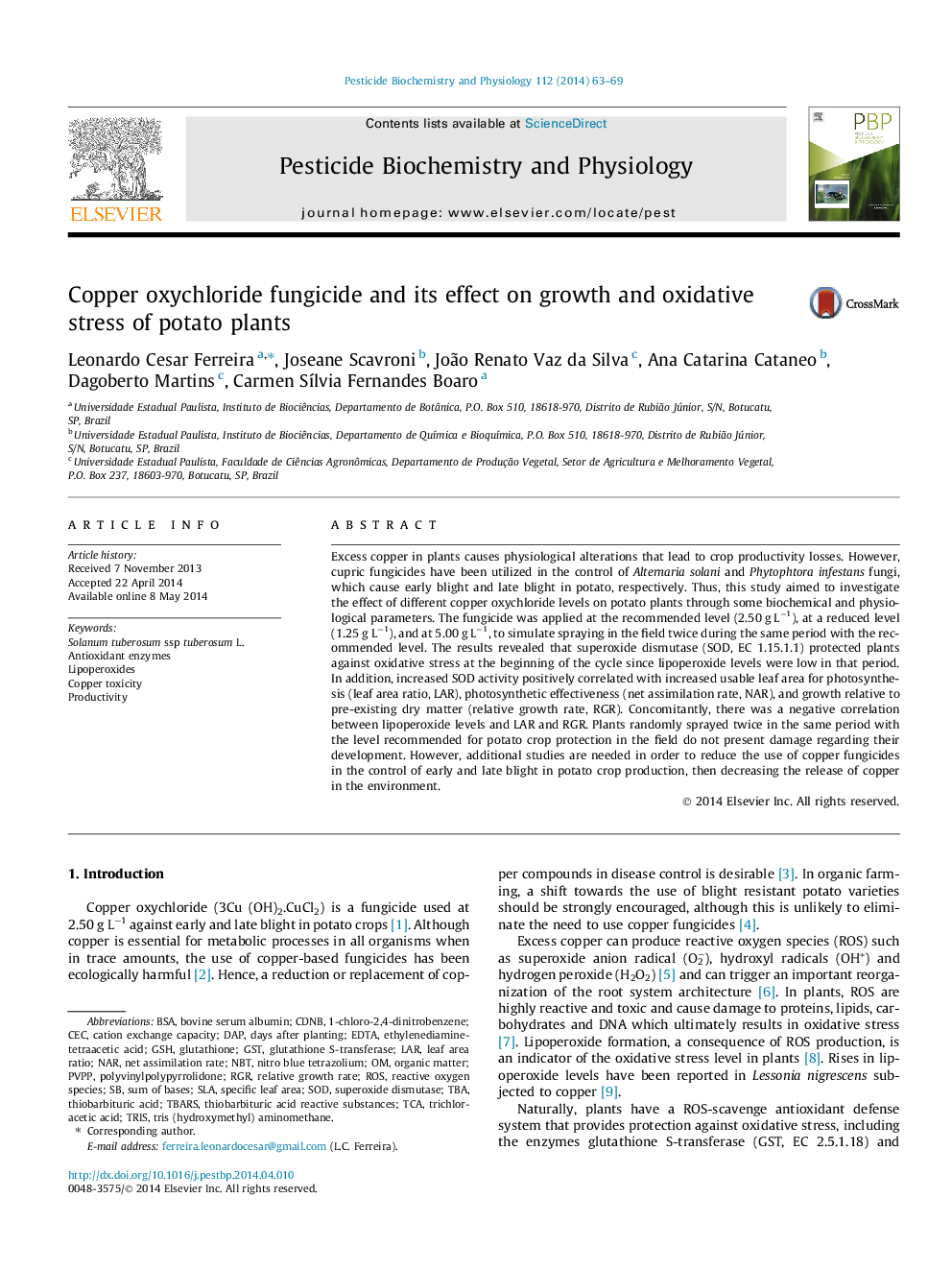| کد مقاله | کد نشریه | سال انتشار | مقاله انگلیسی | نسخه تمام متن |
|---|---|---|---|---|
| 2009212 | 1541787 | 2014 | 7 صفحه PDF | دانلود رایگان |
• Tubers from fungicide-treated plants had higher copper levels relative to controls.
• SOD protected potato plants against oxidative stress at the beginning of the cycle.
• The highest fungicide level positively affected plant growth at the end of the cycle.
Excess copper in plants causes physiological alterations that lead to crop productivity losses. However, cupric fungicides have been utilized in the control of Alternaria solani and Phytophtora infestans fungi, which cause early blight and late blight in potato, respectively. Thus, this study aimed to investigate the effect of different copper oxychloride levels on potato plants through some biochemical and physiological parameters. The fungicide was applied at the recommended level (2.50 g L−1), at a reduced level (1.25 g L−1), and at 5.00 g L−1, to simulate spraying in the field twice during the same period with the recommended level. The results revealed that superoxide dismutase (SOD, EC 1.15.1.1) protected plants against oxidative stress at the beginning of the cycle since lipoperoxide levels were low in that period. In addition, increased SOD activity positively correlated with increased usable leaf area for photosynthesis (leaf area ratio, LAR), photosynthetic effectiveness (net assimilation rate, NAR), and growth relative to pre-existing dry matter (relative growth rate, RGR). Concomitantly, there was a negative correlation between lipoperoxide levels and LAR and RGR. Plants randomly sprayed twice in the same period with the level recommended for potato crop protection in the field do not present damage regarding their development. However, additional studies are needed in order to reduce the use of copper fungicides in the control of early and late blight in potato crop production, then decreasing the release of copper in the environment.
Figure optionsDownload as PowerPoint slide
Journal: Pesticide Biochemistry and Physiology - Volume 112, June 2014, Pages 63–69
